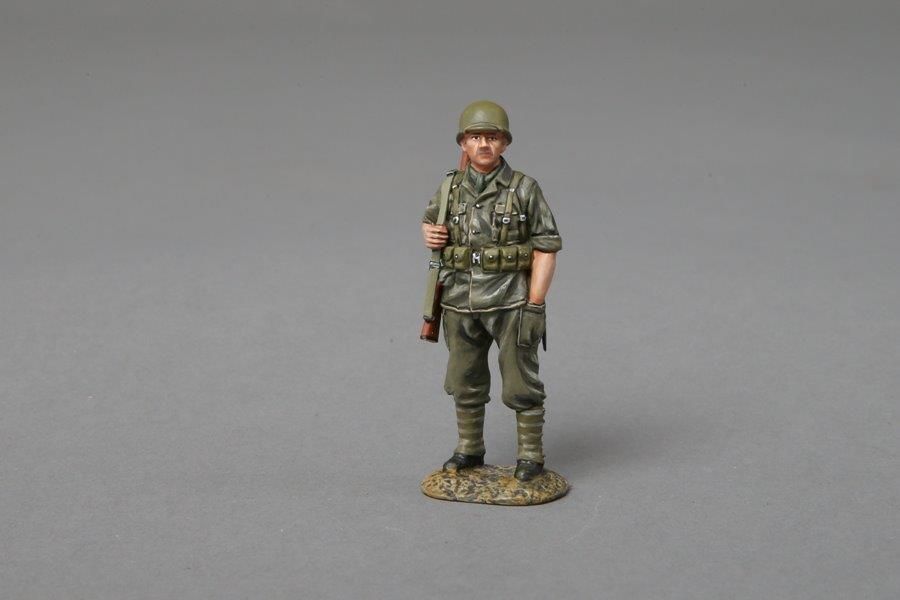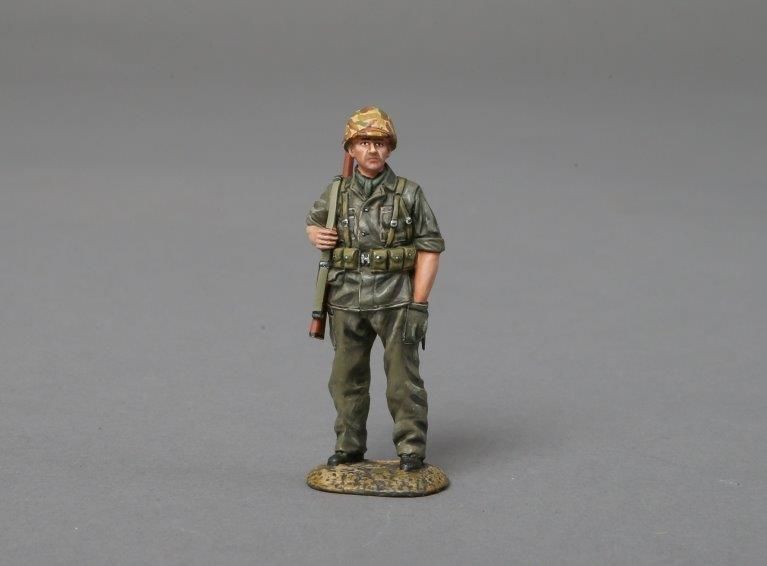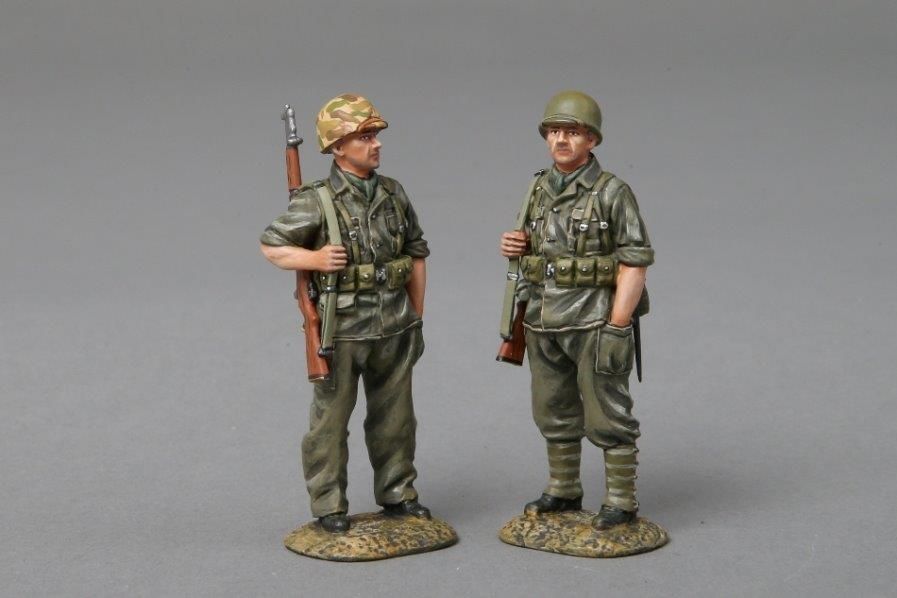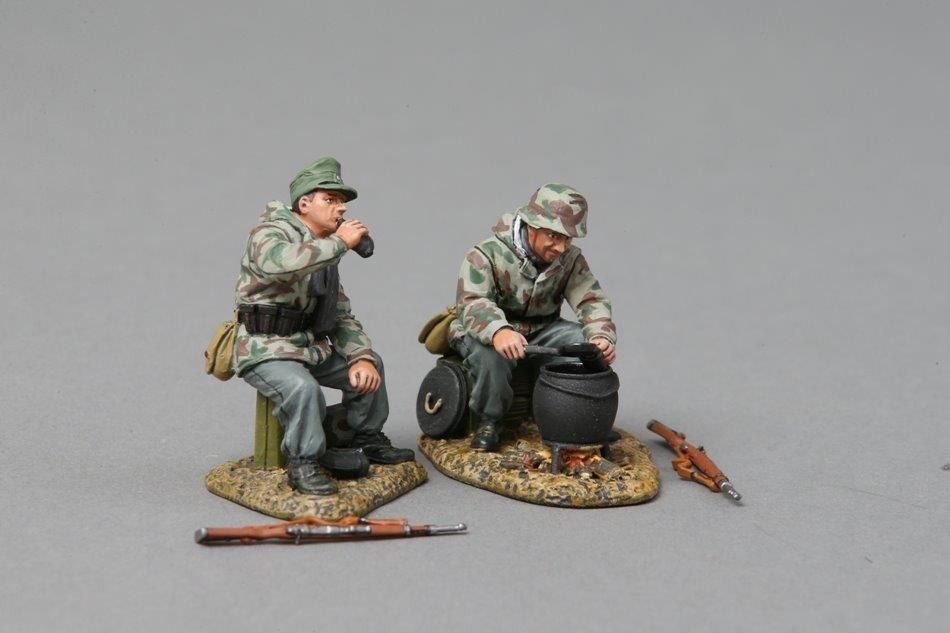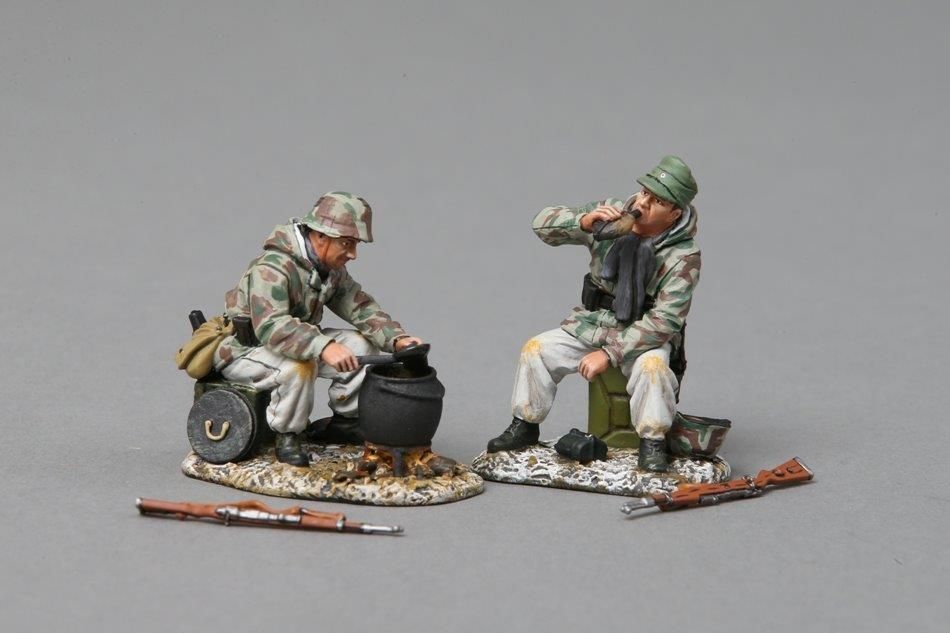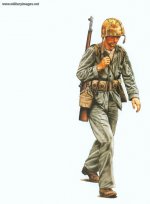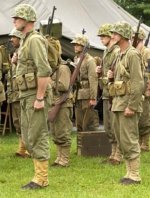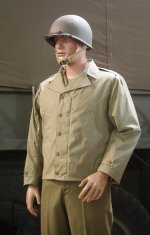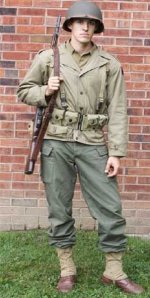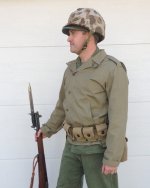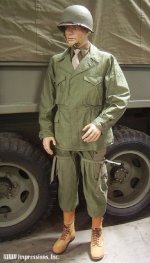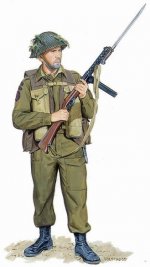You are using an out of date browser. It may not display this or other websites correctly.
You should upgrade or use an alternative browser.
You should upgrade or use an alternative browser.
Gunn march figures release (1 Viewer)
- Thread starter wayne556517
- Start date
- Joined
- Feb 2, 2011
- Messages
- 2,354
Thanks Pete for correcting the typo and making the price $41. All is right again in toyland.
Carlos
I must have had a case of the 'Fridays' or something....Apologies on the typo! I was informed on Saturday morning and fixed it promptly from home.
Julie
- Joined
- Feb 2, 2011
- Messages
- 2,354
Our order arrived today! Grab 'em while you can 
Thomas Gunn Recent Releases
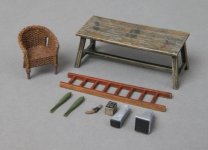
ACCPACK008
Happy Friday Everyone!
Julie
Thomas Gunn Recent Releases

ACCPACK008
Happy Friday Everyone!
Julie
ucla1967
Major
- Joined
- Jan 28, 2006
- Messages
- 6,752
Congratulations of your March releases. They are, generally speaking, outstanding. However, as a three-year active duty US Army veteran who was issued, although it was in the 1960s, World War II field gear and who also wore the US Marine Corps HBT field uniform, albeit as a civilian, during three months of paramilitary training, I have some questions about these two figures. The army figure appears to be wearing the olive-drab M1943 field jacket and trousers, but it appears that he is wearing puttees of some sort. The standard M1943 boot was russet in color, not black, and it had buckled ankle straps above the lower laced section. The trousers were suppose to be tucked into the tops of the boots. Prior to that, they wore khaki canvas leggings. So, either version would probably be more accurate than the puttees. Army web gear was also khaki in color until the last year or so of the war when it was issued in olive-drab. So this figure is a pretty good representation of a late-war army ETO uniform except for the boots and puttees.
The marine appears to be wearing, for all intends and purposes, an army ETO uniform, except for his camouflaged helmet cover. He is not wearing the sage-green, heavy duty Herring Bone Twill uniforms the marines wore from 1943 on, in the Pacific. I don't believe they were issued the army's M1943 field jacket that he appears to be wearing, but instead wore the HBT shirt outside the trousers like a jacket. The sage-green marine HBT field uniform was made of a much heavy material than the army's olive-drab cotton sateen field uniform which was designed to be worn in layers (not needed in the Pacific by the marines). The HBT shirt had a black stenciled "USMC" and a marine corps emblem below it on the left breast pocket. Also, I believe that the marines wore khaki web gear, not olive-drab, during World War II. The marines wore M1938 khaki canvass leggings which had a strap that passed under the instep, but they were unpopular and many marines wore their trousers loose over their boot in the field. Their boots were also different in that they were brown (not russet) and were, in effect, shorter ankle boots without the buckled ankle straps.
.
ucla1967
Major
- Joined
- Jan 28, 2006
- Messages
- 6,752
FYI: Here are three photos of World War II US Marine Corps field uniforms that I googled. You can see the herringbone twill best in the first image. Maybe you will take some friendly advise from a veteran (only seven per cent of the US population has served in the armed forces) and do some basic research before you produce a figure and call it a marine. You didn't even come close. I suspect that most US Marine Corps veterans, the proud and the few, would be insulted by your US Army figure that you represented as a marine.
Attachments
Guy
Major
- Joined
- Feb 11, 2010
- Messages
- 6,619
FYI: Here are three photos of World War II US Marine Corps field uniforms that I googled. You can see the herringbone twill best in the first image. Maybe you will take some friendly advise from a veteran (only seven per cent of the US population has served in the armed forces) and do some basic research before you produce a figure and call it a marine. You didn't even come close. I suspect that most US Marine Corps veterans, the proud and the few, would be insulted by your US Army figure that you represented as a marine.
I understand you have some remarks but I suggest next time you make your comments in a more polite way
just a suggestion
guy:smile2:
Gunn Miniatures
Command Sergeant Major
- Joined
- Jun 18, 2009
- Messages
- 2,852
Congratulations of your March releases. They are, generally speaking, outstanding. However, as a three-year active duty US Army veteran who was issued, although it was in the 1960s, World War II field gear and who also wore the US Marine Corps HBT field uniform, albeit as a civilian, during three months of paramilitary training, I have some questions about these two figures. The army figure appears to be wearing the olive-drab M1943 field jacket and trousers, but it appears that he is wearing puttees of some sort. The standard M1943 boot was russet in color, not black, and it had buckled ankle straps above the lower laced section. The trousers were suppose to be tucked into the tops of the boots. Prior to that, they wore khaki canvas leggings. So, either version would probably be more accurate than the puttees. Army web gear was also khaki in color until the last year or so of the war when it was issued in olive-drab. So this figure is a pretty good representation of a late-war army ETO uniform except for the boots and puttees.
The marine appears to be wearing, for all intends and purposes, an army ETO uniform, except for his camouflaged helmet cover. He is not wearing the sage-green, heavy duty Herring Bone Twill uniforms the marines wore from 1943 on, in the Pacific. I don't believe they were issued the army's M1943 field jacket that he appears to be wearing, but instead wore the HBT shirt outside the trousers like a jacket. The sage-green marine HBT field uniform was made of a much heavy material than the army's olive-drab cotton sateen field uniform which was designed to be worn in layers (not needed in the Pacific by the marines). The HBT shirt had a black stenciled "USMC" and a marine corps emblem below it on the left breast pocket. Also, I believe that the marines wore khaki web gear, not olive-drab, during World War II. The marines wore M1938 khaki canvass leggings which had a strap that passed under the instep, but they were unpopular and many marines wore their trousers loose over their boot in the field. Their boots were also different in that they were brown (not russet) and were, in effect, shorter ankle boots without the buckled ankle straps.
.
Mike thanks for your comments, a very well put together post. I concede the point about the boots, something we will amend on future issues. However I think for most collectors its an easy fix and if they cannot do it, I am sure that any model maker/painter would do the job for them very quickly.
The US Army figure we released (the A version) is wearing gaiters not puttees, however we only put out limited photos on our newsletter and you cannot see the eyelets on this frontal picture, go to our website and you can see a side view of the gaiters which do show the eyelets. Gaiters it would appear came in many shades of tan, brown and olive drab green depending on who manufactured them.
With regards to what uniform the USMC wore in WW2 its a well known fact that the Marines were issued, begged, borrowed and sometimes even stole Army uniform and equipment during WW2. From what I can see the US Army did have tan and green shades of webbing (towards end of the war) but we can make our webbing more tan in appearance on the next issue for those of you who prefer it this way. I guess this will also make the A and B variants more different in appearance which is something we certainly strive for. With reference to uniform and from the many reference sources available on the Web it would appear that the USMC were issued by the 1000's, US Army jackets as per this link below:
http://www.ww2gyrene.org/P1941_utilityuniform.htm
A site dedicated to the US Marine in WW2 which clearly shows on the last picture a US Marine wearing an Army issue jacket. I know US Marines were also issued British style Battledress supplied by the Australians when they were based there, a look we may well consider at some point for our future Marines.
In conclusion our US Marine could be a US Marine wearing Army issue clothing and late war webbing except for his helmet cover which would differentiate him from his Army colleagues?
FYI The figure has sold very well, we kept 20 back to go with our future USMC aeroplanes scheduled for release later this year but I am expecting him to disappear from our inventory quite soon. Hopefully despite the wrong colour boots he will be popular with collectors.
Once again thanks for your comments and a very informative post, I feel it was a little let down by part 2 of your post but that's just my opinion. I put a 'like' by your first post but would have put an 'unlike' by your second post if the option had been available. Maybe the good folks at Treefrog could install this option, it might save many future arguments and regrettable outbursts in the future which we all know have appeared in the past?
Best wishes Vicki
Last edited:
ucla1967
Major
- Joined
- Jan 28, 2006
- Messages
- 6,752
I understand you have some remarks but I suggest next time you make your comments in a more polite way
just a suggestion
guy:smile2:
Well Guy, it was actually a little tongue in cheek on my part knowing how Gung Ho and proud most marines are about the Corps (and rightfully so). Would they be insulted? Maybe or maybe not, but they sure wouldn't think that the figure looked like a marine. I am sorry if you took offense.
Mike
Guy
Major
- Joined
- Feb 11, 2010
- Messages
- 6,619
Well Guy, it was actually a little tongue in cheek on my part knowing how Gung Ho and proud most marines are about the Corps (and rightfully so). Would they be insulted? Maybe or maybe not, but they sure wouldn't think that the figure looked like a marine. I am sorry if you took offense.
Mike
OK Mike no hard feelings, friends like before
guy:smile2:
ucla1967
Major
- Joined
- Jan 28, 2006
- Messages
- 6,752
While it is true that the US Marines in World War II used US Army equipment like rifles, machine guns, mortars, artillery, tanks, helmets, etc, they tried very hard to keep their uniforms unique from those worn by the army. An exception was the M1941 Field Jacket in Light Olive Drab #9 which tended to fade to a color that almost appeared to be khaki. Hence, you see many photos of US Army infantrymen in two-tone uniforms that appear to have khaki jackets with either cotton olive green or wool chocolate brown trousers. While the M1941 Field Jacket looked very stylish with its two slash pockets, it had too many problems from that it wasn't warm enough to its small impractical pockets. So, the M1941 was replaced by the dark green olive drab M1943 Field Jacket which was longer and had four large pockets with buttoned flaps among other improvements. In fact, a slightly modified version, the M1951 Field Jacket, was standard issue in the US Army until the mid-1960s (my beat up 1961 original issue from basic training with frayed cuffs and blood stains is hanging in my closet). Although the army replaced it, the US Marines continued to issue the M1941 Field Jacket to their men in boot camp from the start of the war right up to its end. I do not believe the marines were ever issued M1943 Field Jackets.
The first image is the M1941 Field Jacket which looks more like a wind breaker to me. The second image shows a typical US Army infantryman wearing a faded M1941 Field Jacket, khaki web gear, khaki canvas leggings, and russet colored boots. The third image shows a US Marine with khaki web gear wearing the M1941 Field Jacket over his sage green Herring Bone Twill field uniform. The fourth image is the M1943 Field Jacket, which, as you can see, looks quite different from the M1941.
The first image is the M1941 Field Jacket which looks more like a wind breaker to me. The second image shows a typical US Army infantryman wearing a faded M1941 Field Jacket, khaki web gear, khaki canvas leggings, and russet colored boots. The third image shows a US Marine with khaki web gear wearing the M1941 Field Jacket over his sage green Herring Bone Twill field uniform. The fourth image is the M1943 Field Jacket, which, as you can see, looks quite different from the M1941.
Attachments
Gunn Miniatures
Command Sergeant Major
- Joined
- Jun 18, 2009
- Messages
- 2,852
Speaking of marines, naval infantry, etc. I'm looking forward to TGM forthcoming release of a commando from the Royal Canadian Naval Beach Commando “W.” Hopefully in April's dispatches.
View attachment 188345
Cheers,
Brendan
Ahhh well no secrets here then!
BTW the B version jungle hut sold out at our end with the A version also on its way out the door very quickly, please order from your dealer if not done so already.
Best wishes Vicki
4th Hussar
Sergeant Major
- Joined
- Nov 22, 2007
- Messages
- 1,465
OK Mike, tell me how you got wounded in Basic Training ?
(my beat up 1961 original issue from basic training with frayed cuffs and blood stains is hanging in my closet).
(my beat up 1961 original issue from basic training with frayed cuffs and blood stains is hanging in my closet).
ucla1967
Major
- Joined
- Jan 28, 2006
- Messages
- 6,752
OK Mike, tell me how you got wounded in Basic Training ?
(my beat up 1961 original issue from basic training with frayed cuffs and blood stains is hanging in my closet).
It is the field jacket that I wore for three years. The blood stains are mine from 1964 and, believe it or not, I don't remember exactly how I got them.
ucla1967
Major
- Joined
- Jan 28, 2006
- Messages
- 6,752
At the risk of beating a dead horse, a picture is worth a thousand words which brings me to this recommendation on a series of excellent books on military uniforms. They are called "An Illustrated Encyclopedia of Uniforms of World War II, ...World War I, ...the Napoleonic Wars, etc.." If you are not familiar with them, they have realistic, high-quality color illustrations of uniforms, mixed with historic photos, and text. They have become, by far, my favorite uniform source. I was able to purchase them on Amazon; they are published by Lorenz Books in the U.K.
Users who are viewing this thread
Total: 2 (members: 0, guests: 2)


